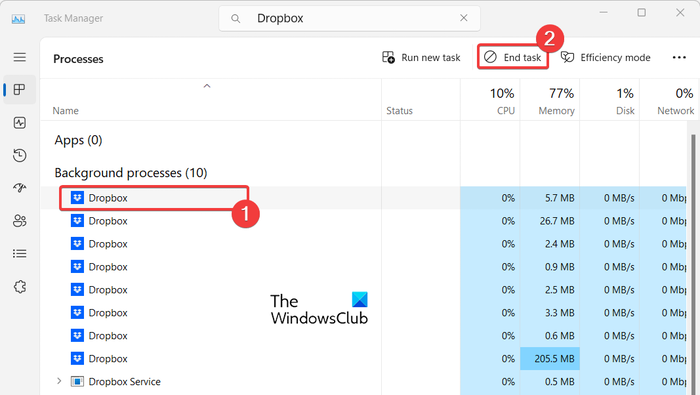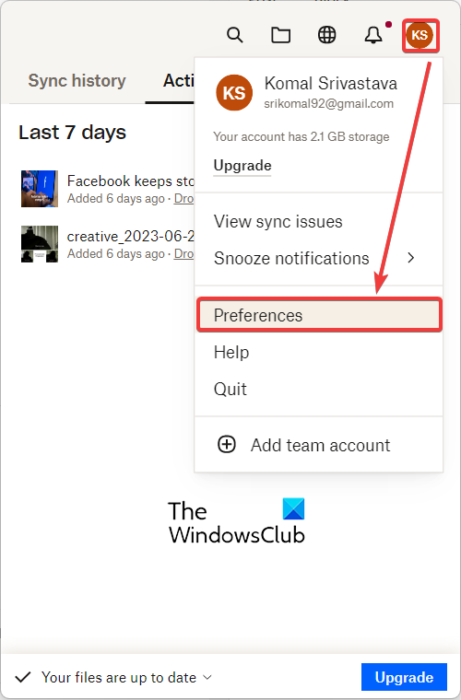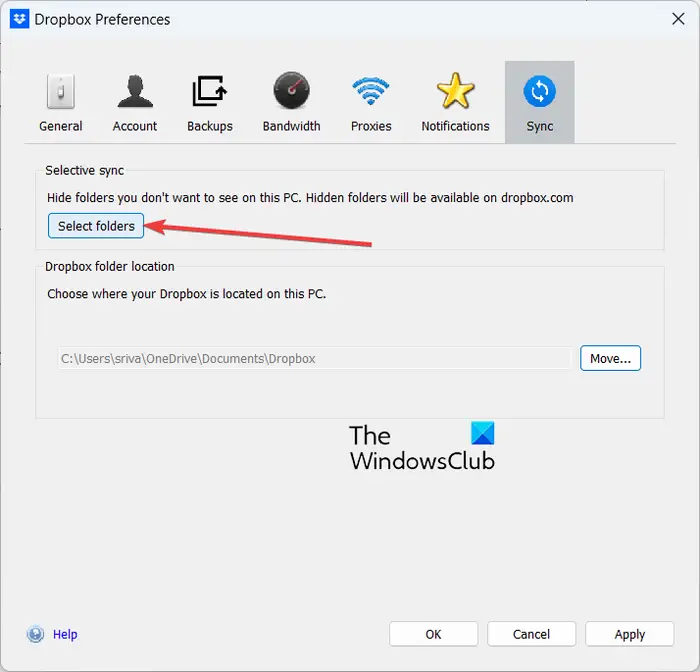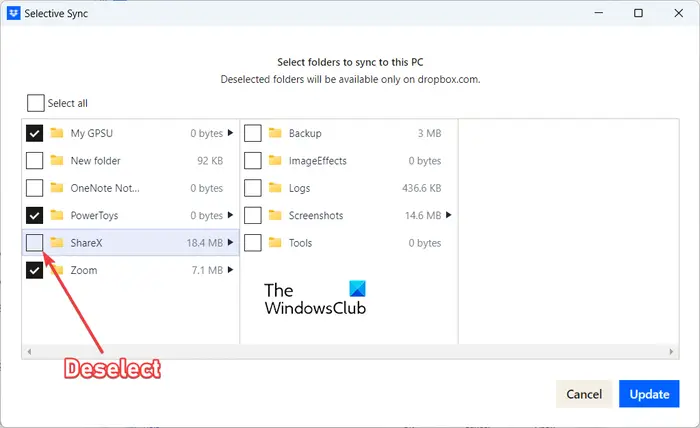If the Dropbox app displays high Memory, CPU and Disk usage on your Windows computer, this post will help you fix the issue. As reported by some users, Dropbox continuously uses high CPU and other system resources. Some even reported that this happens even when the app is not indexing or syncing. This issue slows down your PC and affects its overall performance.
The high CPU usage is generally because there are several Dropbox processes running to store, synchronize, and update your files, as well as to check for new Dropbox updates. Now, if you want to reduce the resource utilization of Dropbox on your computer, you can use the methods we have mentioned in this post.
Fix Dropbox High Memory, CPU and Disk usage on Windows PC
If the Dropbox app displays high Memory, CPU and Disk usage on your computer, here are the troubleshooting methods you can apply:
- Restart Dropbox.
- Use Selective Sync.
- Close some background apps.
- Ensure that the files are not in use while syncing.
- Move your Dropbox folder to a drive with a supported file system.
- Uninstall, then reinstall Dropbox.
1] Restart Dropbox

The first thing you can do to fix this issue is to close the Dropbox app and any other background process related to it. After that, you can reopen the Dropbox app and check if it has stopped acting weird and consuming high CPU usage. It is a simple workaround but does work in a lot of situations. So you can restart the app and see if the issue is resolved.
First, open Task Manager using the Ctrl+Shift+Esc hotkey and locate and select the Dropbox process in the Processes tab. Now, press the End task button to close it. Similarly, you can close other Dropbox processes. Once done, relaunch the Dropbox app to start syncing your files and see if the problem is resolved.
2] Use Selective Sync
Dropbox may consume a high CPU usage if there are large files or a lot of files being synced. So, if that is the case, you can decrease the number of files on your computer and see if that reduces its overall CPU usage or not. To do that, you can use its Selective sync feature. This feature enables you to remove Dropbox folders from your hard drive and save them to your Dropbox account online. This will save space on your PC and is likely to resolve the problem of high CPU usage of Dropbox.
Here’s how to do that:
First, click on its icon from the system tray.

Now, click on your profile icon and select the Preferences option.

Next, move to the Sync tab, and under the Selective sync section, click on the Select folders button.

After that, select those folders that you want to save on your hard drive, and deselect all those folders that you want to remove from your hard drive and save them on dropbox.com.
Once done, click on the Update button and then analyze if the CPU usage of Dropbox is decreased or not.
If selective syncing doesn’t work for you, move on to the next solution to resolve the problem.
3] Close some background apps
If some background programs interfere with Dropbox sync, you might face this issue. These apps may include antivirus software, firewall, backup apps, etc. Such apps might have access to your Dropbox folder, which Dropbox may consider as edits. As a result, it keeps syncing the changes when the app requests access frequently.
Hence, if the scenario is applicable, you can try closing some background apps and see if it reduces Dropbox’s Memory, CPU, and Disk usage. You can open Task Manager, close a background app, and check if the problem is resolved. This way you can analyze the background app which was causing the issue. You can then disable that app.
4] Ensure that the files are not in use while syncing
The excessive CPU usage of Dropbox could be caused when the Dropbox files are being used by a third-party program. Hence, make sure that the files are synchronized properly and are not in use.
5] Move your Dropbox folder to a drive with a supported file system
Dropbox won’t be able to sync files on a system that has a file system without support for extended attributes. Still, the app will continue trying to sync your files which eventually leads to high CPU usage. If this scenario is applicable, you can move your Dropbox folder to an NTFS-formatted hard drive. Or you can also partition your hard drive with the NTFS file system.
6] Uninstall, then reinstall Dropbox
If the above solutions don’t work for you, you can uninstall and then reinstall the Dropbox app. There are chances that the installation of the Dropbox app has gone corrupted, which is why it is acting weird and consuming high Memory, CPU and Disk usage on your computer. You should download & install the latest version of Dropbox on your PC.
Read: Dropbox Error 429, Too Many Requests.
How do I stop Dropbox from taking up hard drive space on Windows?
To stop Dropbox from taking up large hard drive space on your PC, you can use its selective sync feature. This feature allows you to remove some folders from your hard drive and keep them on your account on the Dropbox web app. You can open your Dropbox preferences on your PC, go to Sync, click on the Select folders button, and choose the folders that you want to remove from your hard drive.
Read: Dropbox not syncing or working on Windows.
Why is Dropbox indexing all my files?
Dropbox shows an “Indexing” status when it starts preparing your files and folders to sync with your Dropbox account. So, to sync your files and folders, indexing is needed. It primarily happens when you set up the Dropbox app for the first time. However, if you see Dropbpox being stuck at indexing forever, check your internet connection and make sure it’s working fine. Apart from that, you can pause and then resume syncing on Dropbox to check if the issue is resolved.
Now read: Zip file is too large error when downloading files from Dropbox.
Leave a Reply